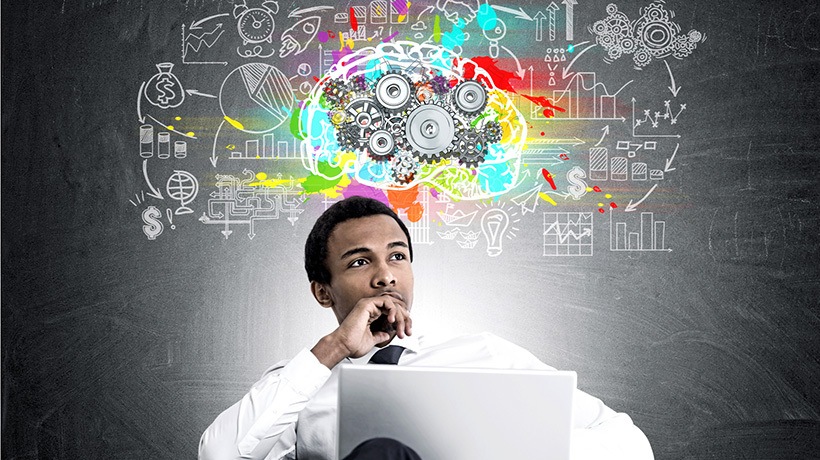Focusing On Training Content Vs. Learning Experience Has Proven To Be Counterproductive
According to the Global Human Capital Trends research by Deloitte, employees say that the most difficult aspect of learning is the overwhelming amount of content. They cannot scan through it as fast as needed to find the relevant material. They waste their time searching, when they could instead spend it on performing job tasks and being more productive. As a result, their learning journeys seem more like a punishment than a blessing.
Content curation is a mix of art and science. It requires a deep understanding of employees’ needs, the most appropriate format of material presented, and correct timing. If done right, it contributes much to employees’ learning experiences and enhances their performance, improves the competitive ability of a company, and retains top talent. Let's consider why a positive, personalized learning experience would be more impactful than tons of "perfect" learning content.
The Psychology Behind Information Overload
Learning can be defined as a relatively permanent change in behavior that results from experience. But what kind of experience should it be? One that will smoothly change perceptions and facilitate further learning? Or one that is focused on quantity and is detrimental to productivity and motivation?
Imagine this scenario: It’s Adam’s first day as a customer support representative. He receives a call, but can’t immediately handle the customer query because it’s difficult to access the training platform right on the spot. He gets lost while navigating all the folders; search results show him a lot of suggested learning materials for a given keyword, but he doesn’t have time to look through all of them. Adam becomes stressed out because the customer doesn’t want to wait and gets cranky!
When loads of information go along with a difficult access to the needed chunks of material, then we can't blame employees for failing to complete their job tasks. But we can remedy the situation by providing positive learning experiences.
Positive Employee Learning Experience: What Is It Comprised Of?
The design of a positive employee experience consists of two cornerstones: ease and relevance.
The need for effortless employee learning experiences was highlighted in CEB's L&D Digital Learner survey, showing that 55% of employees find learning hard to consume, 57% of employees find it hard to access, and 54% of employees find it hard to apply to their careers. No worries, all these issues can be solved with modern learning platforms.
However, effortlessness is only one aspect. For a truly positive learning experience, your training should be just-in-time to address a lack of relevant knowledge and skills, boost confidence and motivation, and improve engagement and performance as a result. Consider the following example:
I need to figure out how to change a burned-out light bulb (lack of knowledge). I’ve never done it before (lack of skills); but I’m afraid of the dark, so I won’t feel at ease at my own house without the light (I have a motivation to do it). But what if I get burned while unscrewing the bulb? What if I get zapped by electricity (lack of confidence)? I find a video on YouTube that easily explains all the steps of changing a light-bulb. I watch it. I rewind it. I watch it again. I try, and I nail it!
No matter how elaborate the training content might be or how much time and effort was put into its design, it won’t give the desired results unless it’s relevant and effortless in terms of accessibility, consumption, and immediate practical application.
Building Positive Learning Experiences Is Only Possible In Organizations With A Learning Culture
It’s crucial to understand that creating a positive learning experience can only be done through a complete reinvention of the entire company, by making it a learning organization that facilitates learning and continuously transforms itself. But why is this important?
Designing positive learning experiences is not just for pleasing your employees. Employees’ professional development allows a company to grow. However, to continuously adapt to change and stay competitive in the relentless business environment, companies need to arm their people with up-to-date knowledge and skills.
A positive learning experience is essential for success, since it offers effortless access to information, facilitates the consumption of relevant material, and improves employee performance and engagement.
The Environment Of Every Successful Learning Organization
Research at Bersin shows that in learning organizations experiences matter more than content. They focus on the circumstances, situations, and settings that affect how conducive the overall working environment is for employee development.
To ensure a successful employee learning experience, the working environment should be:
Blended
To ensure effective training, it's crucial to bring learning to where employees are. In other words, your training program should blend in naturally with the workflow. Since employees usually don't study job-related material at home, and when at work, they don't have enough time on their hands for training, they should experience learning while working. With a mobile learning platform, your employees won’t experience any work disruption, accessing any relevant material on the go.
Social
Communication drives positive learning experiences. It’s natural for people to learn while communicating, so those talks by the coffee machine do contribute to knowledge sharing. A modern learning platform can streamline communication within your organization, seamlessly connecting all employees (no matter where they are) via group chats, direct messages, or discussion boards, and allowing managers to leave constructive on-demand feedback.
Supportive
Companies need to provide psychological safety for their employees. People should be able to ask questions freely; they shouldn’t be afraid to make mistakes or offer creative solutions to problems. They also should know that their managers will support them when they encounter performance issues and will recognize differences in visions instead of forcing their own.
Learner-Centric
With the help of AI and modern learning tools, companies can create personalized learning paths that are tailored to every employee’s needs. By taking into account all performance issues each employee encounters and offering targeted content to solve them in time, companies can ensure a positive learning experience for their employees from day one and throughout their whole careers.
Challenging
Learning should raise accountability and empower employees to continuously set new professional goals. To ensure this, companies should foster experimentation with new approaches to problem-solving, embrace new ideas, take risks, and explore the uncharted waters. Only by supporting continuous development, can organizations remain competitive and grow their talent to foster innovation and productivity.
A great learning experience not only benefits your employees but it also helps your company to achieve business goals, quickly adapt to changes, maintain a high competitive ability, and attract and retain top talent. It’s not an easy task – that’s why choosing the right modern learning tools is crucial for facilitating your employees’ development and your company’s growth.









